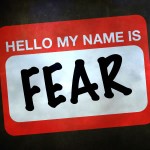 There comes a time when people look around and start to see through the complacency that most of the population is guilty of. With that first realization that things might not always go as planned comes a little bit of panic. All of a sudden you feel inadequately equipped to take care of yourself and your family. If you let the unease or panic influence your decisions, you’ll start spinning your wheels or even worse, you’ll spend a bunch of time and money in ways that don’t offer much benefit. I’m sure there are a lot of people out there with a case of MREs in a closet somewhere that don’t feel any better about their situation. Then there are folks that do what modern people do when they don’t know something; hit Google and start reading. The are tons of great resources on being prepared, but there is a lot of chaff to sort through. I visited hundreds of website, blogs, and online stores before I started getting relevant information.
There comes a time when people look around and start to see through the complacency that most of the population is guilty of. With that first realization that things might not always go as planned comes a little bit of panic. All of a sudden you feel inadequately equipped to take care of yourself and your family. If you let the unease or panic influence your decisions, you’ll start spinning your wheels or even worse, you’ll spend a bunch of time and money in ways that don’t offer much benefit. I’m sure there are a lot of people out there with a case of MREs in a closet somewhere that don’t feel any better about their situation. Then there are folks that do what modern people do when they don’t know something; hit Google and start reading. The are tons of great resources on being prepared, but there is a lot of chaff to sort through. I visited hundreds of website, blogs, and online stores before I started getting relevant information.
I haven’t found many sources for a new “prepper” to get information on where to start, so that prompted me to put one together. I’m sure there are things I’ll miss, and some folks will think my priorities might be a little off. I’ll take that risk to do my best to help someone new get started without feeling overwhelmed. We’d all like to have a zombie proof compound in the Rockies and provide for all of our own needs, but that’s not a realistic short term goal for most of us. Starting small and working up is the only way to approach being prepared. If you start big and plan for massive global disaster, you’ll always feel inadequate and burnout will set in pretty quickly. Starting small in your own home will give you a feeling of security and give you a base to build on. By starting small, you won’t prepare for any one specific disaster. There are a lot of ways that things can go wrong in life. It’s best to have basic levels of preparedness that will cover a lot of bases. I’ll approach this as a step-by-step plan. This might evolve into an easy to follow checklist with some input from others in the survival community.
Now let’s get to the nitty-gritty of gaining that warm and fuzzy feeling we get when we know we are better prepared than most to weather the storms life might throw at us. We all have basic needs to meet to maintain our basic survival like air, water, food, and shelter from the elements. Air is pretty easy; if we don’t have it we are toast within a couple of minutes. For simplicity, we’ll assume air will be available. Water is the next important need to meet. We can only go a couple of days without water before we expire, so it needs to be taken seriously. Food rates really high on the list as well. We can go a few weeks without it, but those will be a few miserable weeks. Hunger leading into starvation is probably one of the worst ways to die. We’ll address these needs in our first step.
Step 1. Getting Our Homes in Order.
Being ready at home is as easy as having the things we need available to us every day. Water and food storage is the best place to start. Having a year of food and water put away is nice, but a giant step for any household. Start smaller and look at having a week or two of reserves. We live in a society that allows easy access to grocery stores and a seemingly endless supply of clean water from the tap. Everyone takes this for granted. If we need something, it’s a short trip to the store. Maybe we do this several times a week. At some point, there might be a situation where we can’t get to the store or delivery trucks can’t get to the store to restock. It doesn’t take a massive disaster to cause this. Maybe it’s something as common as a winter storm that makes driving unsafe for a few days. A lot of times, most people never have food to go more than a couple of days. If you have 2 weeks of reserves, you won’t even notice in your daily life.
The easiest way to approach building this reserve is to look in your pantry and determine what foods have a long shelf life. Once you have an idea, start buying one or two extra items when you grocery shop. It starts to add up quickly. It is easy to start looking at all sorts of stuff at the store to find the longest shelf life, but limit it to foods you like to eat. A case of SPAM doesn’t matter much if you hate the stuff. “Store what you eat and eat what you store” is a common saying in the survival community. If you like beans, then that makes a great item to have extra on hand. Pasta is another favorite that stores well and a lot of people eat regularly. Keep in mind that you aren’t looking for large amounts that will last for years. This is stuff you like to eat, so you’ll be using it and replacing it when you go to the store. This way you have food reserves, but they are constantly being rotated as you prepare meals. Use the oldest first and put the new to the back of the pantry. Now you are not only storing a little extra food, you also have a rotation system in place to make sure you always have fresh food if you need to rely on your storage for any reason.
Storing water often gets overlooked because we often have complete faith in our water supply systems. Every time we turn on the faucet, clean water comes out. Water is bulky and heavy, so why would we want to store it? Simply put, our water system can, and has, failed in the past. It might be a major catastrophe or something as simple as a water main break that interrupts service to a part of your town. If you’ve ever had this happen, you know how quickly grocery stores run out of bottled water.
You can store bottled water in individual bottles or in larger containers if you would like. I do this myself, but I also have some regular tap water stored. Water from the tap is usually clean and very cheap. It can be stored in 2 liter soda bottles or in specific water storage containers. I use 7 gallon water containers with a spigot on the lid so it is easy to pour. I got mine in the camping section of a big box store for less than $10 a piece. How much you store is up to you and how much room you can spare, but a good rule of thumb is a gallon per person per day. It never hurts to have more stored for washing dishes, ourselves and for flushing toilets. Now for a word of advice that I learned the hard way… Don’t store water in milk jugs. The plastic they are made from is designed to be biodegradable and they will start to break down after a short period of time. Also, protect your water containers from freezing. Some are not durable enough to handle the expansion that occurs when water freezes, and they can crack or rupture.
Step 2. Prepared on the Go.
There might be a time where we have to leave our home to escape a disaster. I’ve seen personally the effects of someone having to leave their house in a rush. In a panic mode, most people will not be thinking clearly and will forget crucial items, or they will try to get too much and won’t end up getting much at all in the rush. This is where the often mentioned Bug Out Bag (BOB) comes into play. If you have to “bug out” in a hurry, you need a bag that is already put together that you can grab on the way out the door. I like to keep mine in my vehicle, but it’s up to you so long as you can get to it quickly.
The basic concept of a BOB is a bag that can sustain you for 3 days. The contents should be able to meet your basic survival needs. Food and water is a must. Enough water for three days is heavy and hard to carry, so I have some water and a few means to source water wherever I might end up. Water filtration and purification means are important. Hiking water filters and purification tabs serve well. I also keep a 1oz bottle of bleach with me. One ounce of bleach will purify more what than you can imagine, like hundreds of gallons. I also have a means to prepare and eat the food I have in my bag. You will probably want a way to start a fire and shelter yourself in case you have to spend the night outside. Having a change of clothes and extra socks and underwear will go a long way toward making a survival situation easier to bear. It would be easy for me to go into great detail on what the perfect BOB should contain, but a lot is personal choice and there are so many resources on the web that cover it better than I can. I’ll post links at the end of the article to help you get started. I’ve also covered overlooked items in a different article, which you can read about here.
Step 3. Your Vehicle.
I’ve already written an article covering vehicle preparedness that you can read here. A lot of people feel better about having their house and BOB ready, but overlook the vehicle. Most of us will take our vehicle if we need to get out quickly, so having what we need there is important. During the widespread evacuations of the Houston area preceding Hurricane Rita, countless motorists got stranded in the gridlock that resulted on every major road out. Most people weren’t prepared to evacuate, so they were at the mercy of others for help to get out of harm’s way and off the road. If you’ve read this far into the article, I’m assuming you don’t want to be one of these people any more.
Step 4. Defense.
In a perfect world, defense would just be limited to keeping the snakes and bears away while we’re in the woods, but we don’t live in a perfect world. In fact, we live in a world where people will literally try to kill others over a sale item at a store the day after Thanksgiving. I’m a firm believer that, in most cases, the majority of people are good. They will help others and work together to make the world a better place. There are those that are out to hurt, kill, and steal, but I think they are the smallest percent of our population. BUT, when there is a disaster, people panic. When people panic, they do things they would normally never do. The mild mannered accountant might just shoot you in the face to take food if his children are starving. I’m not saying this to scare anyone, and I don’t believe it is the norm, but the threats are there. There are those that would do you harm, either out of malice or out of fear. All of your best preparations are useless if you cannot defend yourself when a wolf is at the door. I know some of my readers live in areas where gun ownership might be difficult or impossible. For most of us it is a right, and one that should be exercised. However, ownership is not enough. Training on the safe and proper use is a mandatory responsibility of all gun owners. Additional training on defensive uses is highly recommended. Most of us might never have to defend ourselves, but it is our responsibility to do so if the time comes. It is also our duty to do so in a means that is appropriate to the level of threat we are faced with. There are personal, societal, and legal ramifications with this subject that I am not qualified to comment on, so I’ll leave it up to each individual.
Step 5. Feel Better and Start Learning.
Once you have the basics of being prepared underway, you should start to feel a little better about where you are. Knowing that you are better prepared to face what life might throw at you is a liberating feeling. I know how I felt when I knew that something as simple as an ice storm wouldn’t make my life miserable. I’m not saying that having to face a disaster would be fun, but it’s a little less scary when you can rely on the steps you’ve taken so far. Most of us at this point begin to feel empowered. We know we can’t control the world around us, but we know we can take steps to handle a lot more than we could before. For me this was the catalyst to start exploring other ways to take back control. This was my first step in self reliance. Now I focus on learning skill and gaining knowledge that will help me as I strive for more freedom from dependency. Which steps you take next are up to you. For me it was learning ways to remove dependency. Growing a garden to provide my family with real, healthy food was a great step in that direction. I was lucky to grow up in a family that placed a lot of emphasis on providing for ourselves. We always had a garden. Now I’m looking at ways to do it better. Every skill you learn should have a benefit. In my life, learning simple things like how to preserve food or fix a vehicle has not only saved me a ton of money, it gives me a feeling that I am in better control of my life. It’s these little skills that tell me I can handle problems as they arise. There is a feeling of freedom there that I hope each and every reader of Surviving Modern Life will grab and make their own.
Links for the Bug Out Bag:
RS Video: Bug Out Bags For Kids
FEMA has some thoughts on how to prepare.







